Oko Castle
-History of island hero (1) Start from lowest position-
Overview
Name: Oko castle /Okou castle (Oko-jo)
Alias:
Place: Okocho Nankoku city, Kochi
Location: 33.595219605534325, 133.6231605799115
Type: Hill Castle
Built: 13th century, expanded in 16th century
Remnants: Stone walls, clay walls and moats
Title: 100 more famous Japanese castles
Oko castle (岡豊城) is located at Oko mountain, a mountain of 100 meter height at the north edge of Kochi plain and stands aside Kokubugawa river flew into Tosa bay.
Kochi plain is divided into three parts, it mean eastern part of Mononobegawa river area, middle part of current central Kochi city and western part of Niyodo-gawa river area. Historically the center of Tosa province (Kochi prefecture) has located at eastern part of Kochi plain, and the site of Oko castle is applicable to the border of eastern part and middle part. The mountainous road from Awa province (Tokushima prefecture) also passes through this area, and Oko area is an important place of communication.
Oko castle was built by Chosokabe clan as their residence in medieval era. The origin of Chosokabe clan is unknown but it is said that they are descendant of Hata clan, an immigrant from Baekje country of ancient Korea and originally named as Sokabe clan.
Sokabe clan was appointed as local retainer of Tosa province by Kamakura Shogunate and entered the province in 13th century. Sokabe clan grew their territory by branch houses, and to distinguish main stream of the clan, Sokabe clan changed their surname as Chosokabe clan, using the name of their residence.
In Muromachi era, Hosokawa clan, a branch house of Muromachi shogunate, was appointed as a governor of Tosa province, along with Awa province and Sanuki province (Kagawa prefecture). Chosokabe clan became an important retainer of Hosokawa clan and supported their administration.
But Hosokawa clan became the participant of the battle of Onin (1467-1477) and significantly lost its power and authority. At that moment Ichijo clan, one of the highest class noble of Kyoto and had territory at the west end of Tosa province, escaped war-torn Kyoto and came to Tosa country in 1468.
In 1507, due to its internal conflict, Hosokawa clan could not keep Tosa province and left. Tosa country was governed by alliance of seven major local lords such as Motoyama clan, Kira clan or Chosokabe clan, nominating Ichijo clan as their nominal leader.
Chosokabe clan was the lowest position but gradually expand their power under this situation, but this evoked antipathy of other lords. Finally in 1508, alliance of other lords lead by Motoyama clan attacked Oko castle, and Kanetsugu Chosokabe (?-1508) who was the leader of Chosokabe clan, killed himself. Chosokabe clan once lost the power.
Kunichika Chosokabe (1504-1560), the eldest son of Kanetsugu, left the castle and saved by Ichijo clan that was the lord of Nakamura castle (Kochi prefecture) and the strongest among seven lords. Later Kunichika recovered Oko castle and his territory under coordination of Ichijo clan, then attacked neighbor small lord to increase his territory gradually and waited for the chance of revenge.
At that time Chosokabe clan had a eastern part of Kochi plain. This area had a flat terrain and good at cultivation, thus ancient administrative office of Tosa province existed here. But western half of Kochi plain and coast area were held by Motoyama clan, originally the local lord at norther mountainous area but moved southward and built Asakura castle and Urado castle.
Under such situation marine communication of Urado bay was captured by Motoyama clan, thus Chosokabe clan tried to seize Urado bay area. After the death of Shigemune Motoyama (1508-1555), a strong leader of Motoyama clan, the battle of Chosokabe clan and Motoyama clan arouse from a trouble in 1560.
Kunichika Chosokabe lured the general of Asakura clan and let the open of the gate of Nagahama castle, a branch castle of Asakura clan. Kunichika fell Nagahama castle with his son Motochika Chosokabe (1539-1599), who experienced the battle for the first time. But hearing the loss of Nagahama castle, Motoyama army sent 1,000 soldiers to regain the castle.
Both army fought at the side of Nagahama castle. Although Chosokabe army had only 300 soldiers, Motochika Chosokabe charged into the enemy with spear and broke the vanguard of the enemy. Motochika was a courtesy and quiet character and told like a princess, but shows his braveness at this time. Broken Motoyama army once entered into Urado castle, but later disposed it and retreated.
Motochika was praised that he would be the ruler of Shikoku island someday. Just after the battle Kunichika Chosokabe died in ill at Oko castle, then Motochika Chosokabe formally succeeded Chosokabe clan. Now Chosokabe clan seized economic right around Urado bay, and jumped up its position from the lowest. Motochika started his long campaign to unite Tosa province and Shikoku island from his main base Oko castle.
Oko castle is built utilizing an independent hill at the side of Kokubu-gawa river. The central are of the castle is a triangle shaped one of about 50 meter long and 30 meter wide, which has a clay wall at both side. Main building of the castle might exist at this area, and tower like building is restored based on the investigation of basement.
The western slope of the mountain is a key area of the castle and is securely protected by layers of terraces. Just below of the central area, there is a small buffer area surrounded by stone wall and might be a main gate of the castle. Around this area, there are advanced elements such as two basement of corner turrets, technically folded path and dry moats, thus it might be reformed at the final period of Oko castle.
On the other hand, the eastern side there are secondary area and third area which are just flat terraces. On the small peak at the west of the castle, there is a small front fort protected by dry moats. The size of the castle is about 300 meter long and 150 meter wide, and not so large one as Motochika substantially used other castles as main castle at later period.
In 1563, when Motochika attacked Asakura castle of Motoyama clan, Aki clan which was an another powerful lord at the east end of Kochi plain, assaulted Oko castle. But Shigetoshi Yoshida (1498-1570) who was the commander of Oko castle well protected the castle and rejected the enemy. Since then Oko castle was not involved in the battle any more.
Motochika Chosokabe ruined Motoyama clan and Aki clan then united Kochi plain around 1570, and expelled Ichijo clan in 1575 then united Tosa province at that time. Next Motochika proceeded into Iyo province (Ehime prefecture) and Awa province (Tokushima prefecture) where the power of governor declined, and captured major part of both province by around 1580. During this campaign Motochika used Shiraji castle at the center of Shikoku island as his main base.
After the death of central ruler Nobunaga Oda (1534-1582) who once allied with Motochika but later attempted to subjugate, Motochika accelerate his action and virtually united Shikoku island by 1583. But facing the Shikoku campaign of next ruler Hideyoshi Toyotomi (1537-1598), Motochika had to dispose captured territory and only survived as a lord of Tosa province.
After the campaign, Motochika moved his main base to Otakasayama castle, the antecedent of current Kochi castle. Oko castle was kept as a branch castle for a while, but was finally abolished in 1598.
Now castle site becomes a historical park and history museum was built at the third area. The structure of core part is well preserved, along with stone walls and technically built structures. Small castle at quiet country side shows the starting point of Motochika Chosokabe, grew from small local lord to the ruler of Shikoku island.
Continue to (2)
40 minutes walk from JR Shikoku Dosan-sen line Tosa-Otsu station. 15 minutes drive from Kochi-Jidoshado Expressway Nankoku interchange. Just at the next of Kochi Prefectural Museum of History.
Urado Castle -Downfall and disappearance of regional ruler-
Kochi Castle -White elegant buildings on secure stone wall-
Asakura Castle -History of island hero (2) watershed for island ruler-
Nakamura Castle -History of island hero (5) beat of benefactor-
Type: Hill Castle
Built: 13th century, expanded in 16th century
Remnants: Stone walls, clay walls and moats
Title: 100 more famous Japanese castles
Brief History
Oko castle (岡豊城) is located at Oko mountain, a mountain of 100 meter height at the north edge of Kochi plain and stands aside Kokubugawa river flew into Tosa bay.
Kochi plain is divided into three parts, it mean eastern part of Mononobegawa river area, middle part of current central Kochi city and western part of Niyodo-gawa river area. Historically the center of Tosa province (Kochi prefecture) has located at eastern part of Kochi plain, and the site of Oko castle is applicable to the border of eastern part and middle part. The mountainous road from Awa province (Tokushima prefecture) also passes through this area, and Oko area is an important place of communication.
Origin of Chosokabe clan
Oko castle was built by Chosokabe clan as their residence in medieval era. The origin of Chosokabe clan is unknown but it is said that they are descendant of Hata clan, an immigrant from Baekje country of ancient Korea and originally named as Sokabe clan.
Sokabe clan was appointed as local retainer of Tosa province by Kamakura Shogunate and entered the province in 13th century. Sokabe clan grew their territory by branch houses, and to distinguish main stream of the clan, Sokabe clan changed their surname as Chosokabe clan, using the name of their residence.
In Muromachi era, Hosokawa clan, a branch house of Muromachi shogunate, was appointed as a governor of Tosa province, along with Awa province and Sanuki province (Kagawa prefecture). Chosokabe clan became an important retainer of Hosokawa clan and supported their administration.
Temporal fall of Chosokabe clan
But Hosokawa clan became the participant of the battle of Onin (1467-1477) and significantly lost its power and authority. At that moment Ichijo clan, one of the highest class noble of Kyoto and had territory at the west end of Tosa province, escaped war-torn Kyoto and came to Tosa country in 1468.
In 1507, due to its internal conflict, Hosokawa clan could not keep Tosa province and left. Tosa country was governed by alliance of seven major local lords such as Motoyama clan, Kira clan or Chosokabe clan, nominating Ichijo clan as their nominal leader.
Chosokabe clan was the lowest position but gradually expand their power under this situation, but this evoked antipathy of other lords. Finally in 1508, alliance of other lords lead by Motoyama clan attacked Oko castle, and Kanetsugu Chosokabe (?-1508) who was the leader of Chosokabe clan, killed himself. Chosokabe clan once lost the power.
Revenge after long endurance
Kunichika Chosokabe (1504-1560), the eldest son of Kanetsugu, left the castle and saved by Ichijo clan that was the lord of Nakamura castle (Kochi prefecture) and the strongest among seven lords. Later Kunichika recovered Oko castle and his territory under coordination of Ichijo clan, then attacked neighbor small lord to increase his territory gradually and waited for the chance of revenge.
At that time Chosokabe clan had a eastern part of Kochi plain. This area had a flat terrain and good at cultivation, thus ancient administrative office of Tosa province existed here. But western half of Kochi plain and coast area were held by Motoyama clan, originally the local lord at norther mountainous area but moved southward and built Asakura castle and Urado castle.
Under such situation marine communication of Urado bay was captured by Motoyama clan, thus Chosokabe clan tried to seize Urado bay area. After the death of Shigemune Motoyama (1508-1555), a strong leader of Motoyama clan, the battle of Chosokabe clan and Motoyama clan arouse from a trouble in 1560.
Debut of brilliant lord
Kunichika Chosokabe lured the general of Asakura clan and let the open of the gate of Nagahama castle, a branch castle of Asakura clan. Kunichika fell Nagahama castle with his son Motochika Chosokabe (1539-1599), who experienced the battle for the first time. But hearing the loss of Nagahama castle, Motoyama army sent 1,000 soldiers to regain the castle.
Both army fought at the side of Nagahama castle. Although Chosokabe army had only 300 soldiers, Motochika Chosokabe charged into the enemy with spear and broke the vanguard of the enemy. Motochika was a courtesy and quiet character and told like a princess, but shows his braveness at this time. Broken Motoyama army once entered into Urado castle, but later disposed it and retreated.
Motochika was praised that he would be the ruler of Shikoku island someday. Just after the battle Kunichika Chosokabe died in ill at Oko castle, then Motochika Chosokabe formally succeeded Chosokabe clan. Now Chosokabe clan seized economic right around Urado bay, and jumped up its position from the lowest. Motochika started his long campaign to unite Tosa province and Shikoku island from his main base Oko castle.
Structure of Oko castle
Oko castle is built utilizing an independent hill at the side of Kokubu-gawa river. The central are of the castle is a triangle shaped one of about 50 meter long and 30 meter wide, which has a clay wall at both side. Main building of the castle might exist at this area, and tower like building is restored based on the investigation of basement.
The western slope of the mountain is a key area of the castle and is securely protected by layers of terraces. Just below of the central area, there is a small buffer area surrounded by stone wall and might be a main gate of the castle. Around this area, there are advanced elements such as two basement of corner turrets, technically folded path and dry moats, thus it might be reformed at the final period of Oko castle.
On the other hand, the eastern side there are secondary area and third area which are just flat terraces. On the small peak at the west of the castle, there is a small front fort protected by dry moats. The size of the castle is about 300 meter long and 150 meter wide, and not so large one as Motochika substantially used other castles as main castle at later period.
Toward unite of Shikoku island
In 1563, when Motochika attacked Asakura castle of Motoyama clan, Aki clan which was an another powerful lord at the east end of Kochi plain, assaulted Oko castle. But Shigetoshi Yoshida (1498-1570) who was the commander of Oko castle well protected the castle and rejected the enemy. Since then Oko castle was not involved in the battle any more.
Motochika Chosokabe ruined Motoyama clan and Aki clan then united Kochi plain around 1570, and expelled Ichijo clan in 1575 then united Tosa province at that time. Next Motochika proceeded into Iyo province (Ehime prefecture) and Awa province (Tokushima prefecture) where the power of governor declined, and captured major part of both province by around 1580. During this campaign Motochika used Shiraji castle at the center of Shikoku island as his main base.
After the death of central ruler Nobunaga Oda (1534-1582) who once allied with Motochika but later attempted to subjugate, Motochika accelerate his action and virtually united Shikoku island by 1583. But facing the Shikoku campaign of next ruler Hideyoshi Toyotomi (1537-1598), Motochika had to dispose captured territory and only survived as a lord of Tosa province.
Afterward of castle
After the campaign, Motochika moved his main base to Otakasayama castle, the antecedent of current Kochi castle. Oko castle was kept as a branch castle for a while, but was finally abolished in 1598.
Now castle site becomes a historical park and history museum was built at the third area. The structure of core part is well preserved, along with stone walls and technically built structures. Small castle at quiet country side shows the starting point of Motochika Chosokabe, grew from small local lord to the ruler of Shikoku island.
Continue to (2)
Access
40 minutes walk from JR Shikoku Dosan-sen line Tosa-Otsu station. 15 minutes drive from Kochi-Jidoshado Expressway Nankoku interchange. Just at the next of Kochi Prefectural Museum of History.
Related Castles
Urado Castle -Downfall and disappearance of regional ruler-
Kochi Castle -White elegant buildings on secure stone wall-
Asakura Castle -History of island hero (2) watershed for island ruler-
Nakamura Castle -History of island hero (5) beat of benefactor-




























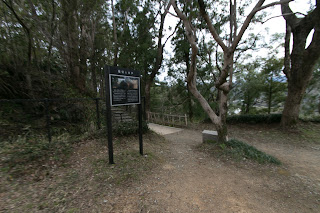




































































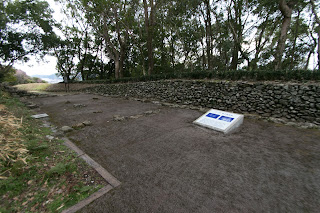













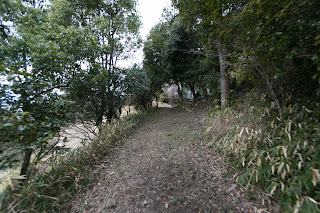



























































































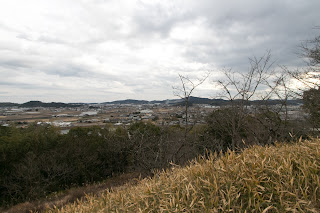


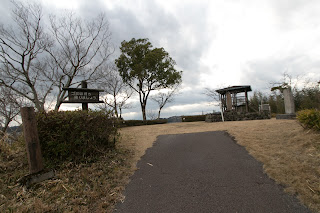






















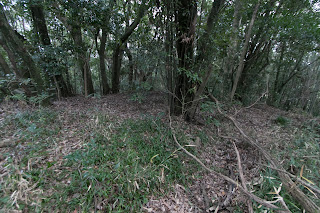










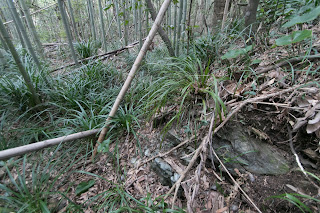

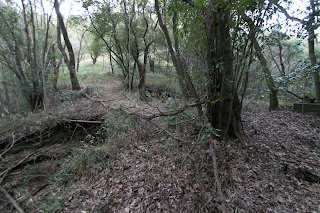































No comments:
Post a Comment